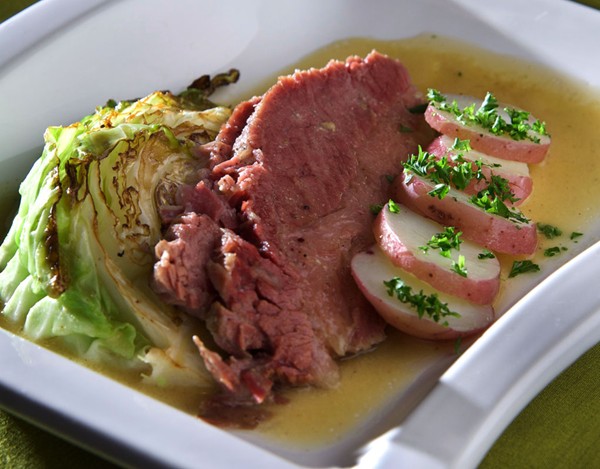The difference between corned beef and pastrami
June 15, 2017 by Darcie
When you go into any American deli, you’re likely to find many of the same deli products, with a few regional specialties thrown into the mix. Among the staples you will usually find corned beef or pastrami. Most people use the two interchangeably, but they are different products. Indexed magazine Food and Wine explains the difference between the two, as well as how they differ from Canadian smoked meat.
Like most cured meat products, both corned beef and pastrami are imports into the U.S., the former from Ireland and the latter from Romania and Turkey. Corned beef is made from brisket, and begins its journey to your plate by resting in a flavorful brine traditionally seasoned with black pepper, cloves, bay leaves, dill and juniper berries. After its brine bath, corned beef is boiled to finish cooking.
Pastrami, on the other hand, gets smoked at the end of its curing period. It shares many of the same flavorings as corned beef, which lends to the confusion between the two products. While it is often made from brisket, the traditional cut is beef navel, which resides near the brisket but is denser and more fatty, making the end result richer than corned beef.
Montreal smoked meat falls somewhere between the two. It’s a smoked meat and shares a lot of flavoring with its southern pastrami neighbor, but contains less sugar. Like pastrami, it is usually served on rye bread with mustard.
Photo of How to cure corned beef from Ruhlman.com by Michael Ruhlman
Categories
- All Posts (6940)
- Antipasto (2135)
- Author Articles (247)
- Book News (935)
- Cookbook Giveaways (983)
- Cookbook Lovers (257)
- Cooking Tips (109)
- Culinary News (299)
- Food Biz People (552)
- Food Online (791)
- Holidays & Celebrations (272)
- New Cookbooks (149)
- Recipes (1500)
- Shelf Life With Susie (231)
- What's New on EYB (133)
Archives
Latest Comments
- eliza on What foods do you look forward to the most for each season?
- kmwyman on Rooza by Nadiya Hussain – Cookbook Review and Giveaway
- Maryd8822 on The Golden Wok – Cookbook Giveaway
- Dendav on Danube Cookbook Review and Giveaway
- sanfrannative on Rooza by Nadiya Hussain – Cookbook Review and Giveaway
- darty on Danube Cookbook Review and Giveaway
- Atroyer7 on Danube Cookbook Review and Giveaway
- demomcook on What foods do you look forward to the most for each season?
- demomcook on Danube Cookbook Review and Giveaway
- Darcie on How cookbooks can help build resilience